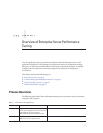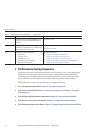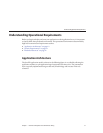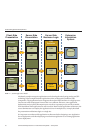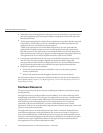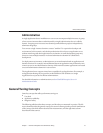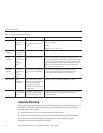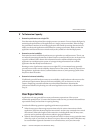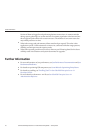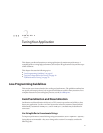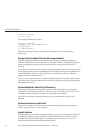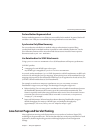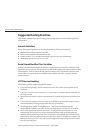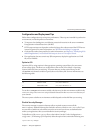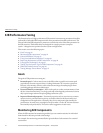
▼
To Determine Capacity
Determine performance on asingle CPU.
First determine the largest load that a single processor can sustain. You can obtain this gure by
measuring the performance of the application on a single-processor machine. Either leverage
the performance numbers of an existing application with similar processing characteristics or,
ideally, use the actual application and workload in a testing environment. Make sure that the
application and data resources are tiered exactly as they would be in the nal deployment.
Determine vertical scalability.
Determine how much additional performance you gain when you add processors. That is, you
are indirectly measuring the amount of shared resource contention that occurs on the server for
a specic workload. Either obtain this information based on additional load testing of the
application on a multiprocessor system, or leverage existing information from a similar
application that has already been load tested.
Running a series of performance tests on one to eight CPUs, in incremental steps, generally
provides a sense of the vertical scalability characteristics of the system. Be sure to properly tune
the application, Application Server, backend database resources, and operating system so that
they do not skew the results.
Determine horizontalscalability.
If suciently powerful hardware resources are available, a single hardware node may meet the
performance requirements. However for better availability, you can cluster two or more
systems. Employing external load balancers and workload simulation, determine the
performance benets of replicating one well-tuned application server node, as determined in
step (2).
User Expectations
Application end-users generally have some performance expectations. Often you can
numerically quantify them. To ensure that customer needs are met, you must understand these
expectations clearly, and use them in capacity planning.
Consider the following questions regarding performance expectations:
■
What do users expect the average response times to be for various interactions with the
application? What are the most frequent interactions? Are there any extremely time-critical
interactions? What is the length of each transaction, including think time? In many cases,
you may need to perform empirical user studies to get good estimates.
■
What are the anticipated steady-state and peak user loads? Are there are any particular times
of the day, week, or year when you observe or expect to observe load peaks? While there may
be several million registered customers for an online business, at any one time only a
1
2
3
GeneralTuningConcepts
Chapter1 • OverviewofEnterprise ServerPerformanceTuning 25



